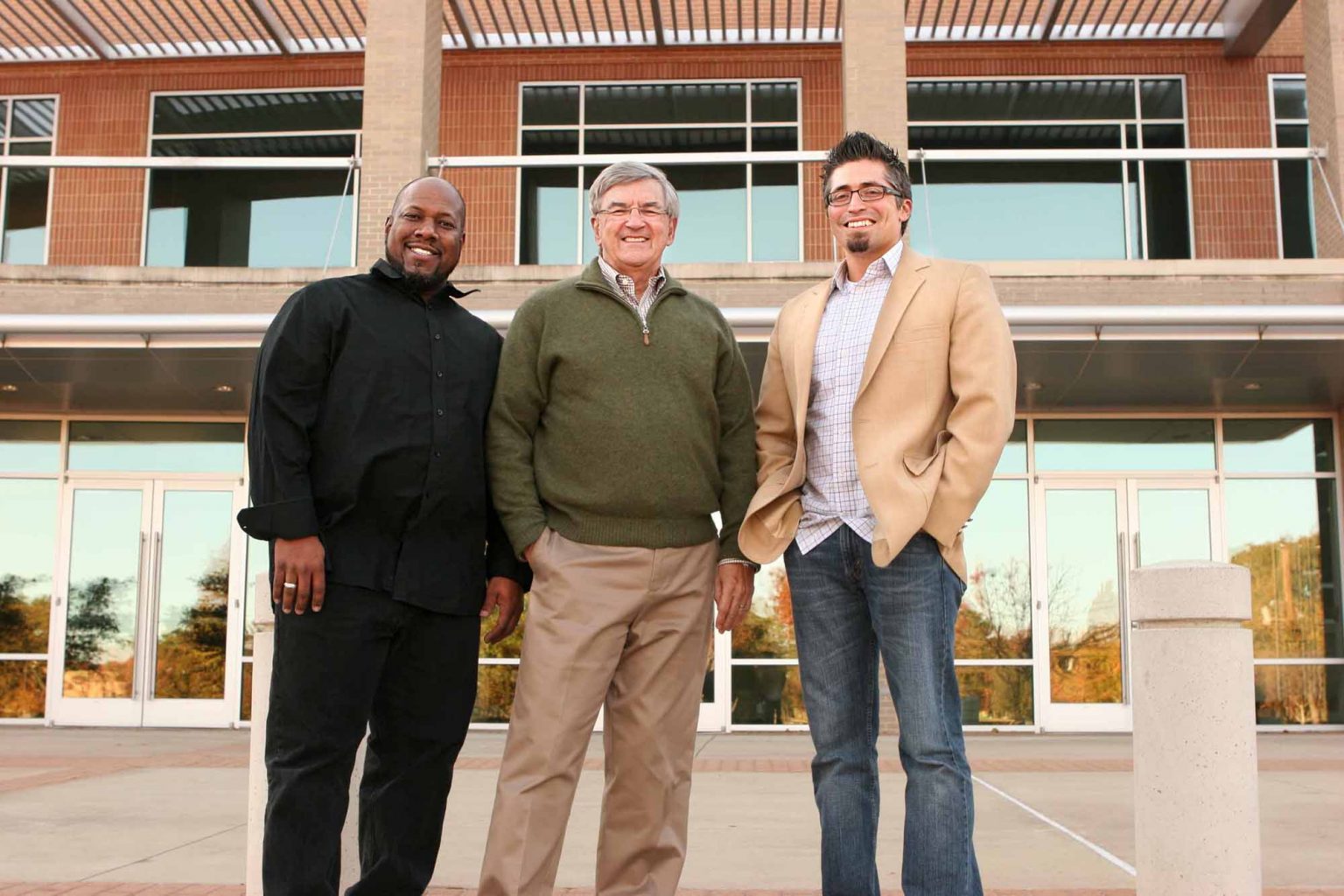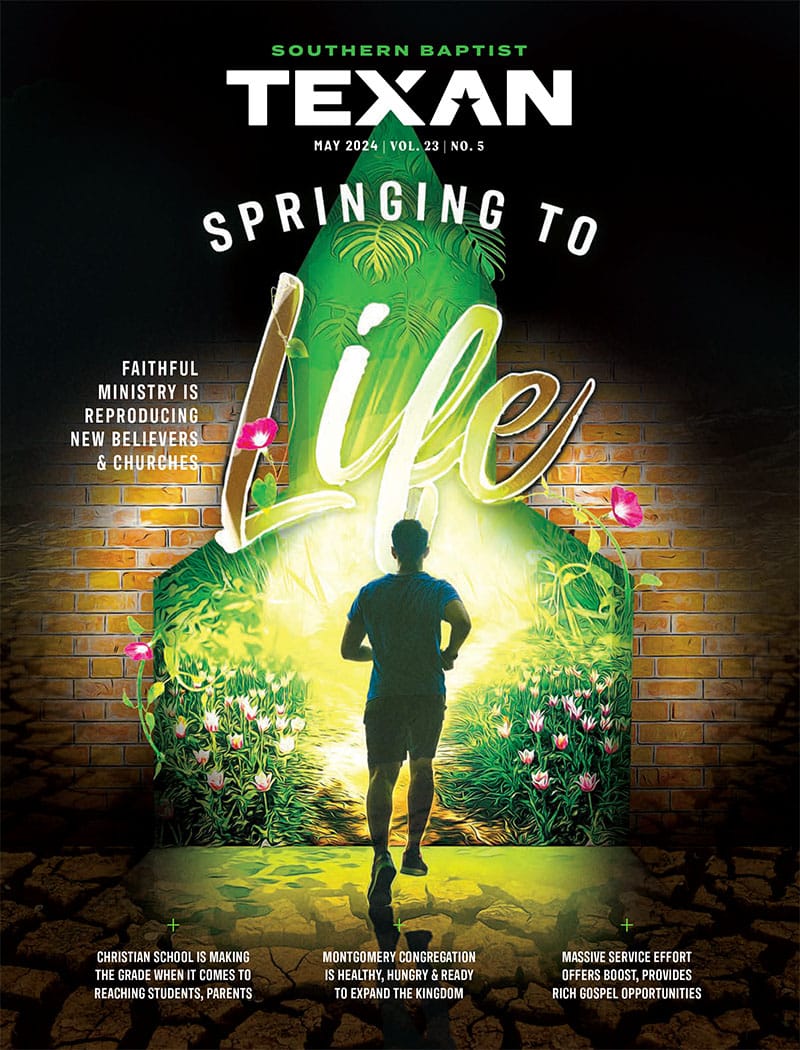ARLINGTON—Pastor Gary Smith was shocked by what he saw at the opening of a new middle school.
In 1991, when he had been called as pastor of Fielder Church in Arlington, the city was predominantly white. His congregation was made up of middle-class folks who drove into Dallas to work. At school, the cheerleaders were all white.
Now, just a dozen years later, Smith was looking at a cheer squad of 24 girls—all but one black.
Arlington had changed dramatically, but Fielder Church was still white, and declining. Smith knew the church had to change as well, if it was going to survive.
More than survival at stake
Like most Southern Baptist churches launched in the mid-1950s, Fielder Church was as segregated as its community. As the city’s population exploded almost six-fold during that era, the church reflected the neighborhoods of white families drawn to the booming economies of Dallas and Fort Worth. Over the next 40 years, Arlington would multiply another six-fold, and Fielder Church grew along with it.
“During those early years, we experienced exponential growth,” Smith said. “We couldn’t build buildings fast enough.
“But neighborhoods generally decline,” Smith noted. “And after about 10 years, we noticed a leveling off of our numbers. People were moving out of Arlington to newer areas.”
As he looked at that predominantly black cheer squad, Smith realized Arlington had changed racially without the church recognizing it. He set out to learn what other predominantly white churches had done to adapt and survive.
“I discovered there were no models for it,” Smith said. “In those neighborhoods, 95 percent of those churches die.”
But Smith also knew the issue was larger than just survival.
“I knew that, from the beginning, God wanted to show the availability of the gospel to all the nations of the world,” he said. “God confronted the ‘Jews only’ mentality of the early church by calling Paul to the Gentiles and giving Peter a vision at Joppa.”
The segregation of Fielder Church had to be addressed, not just for the survival of the congregation, but also for the good of the community’s lost souls.
Painful journey
“We felt God wanted us to do whatever it took to become a vibrant congregation in the midst of a changing city,” Smith recalled. “None of our staff or church leaders had ever been part of something like this, but we believed it was God’s plan. Many of us could have moved to places where the task was easier, but we felt a calling from God to confront this challenge.”
Not surprisingly, the move to reverse the segregation met opposition.
“From the beginning, underlying prejudice surfaced,” Smith said.
“Prejudiced members chose to criticize the leadership or leave the church. Even some well-meaning leaders departed because they were simply unable or unwilling to build relationships with people who were not like them.
“For me as the leader, this journey proved especially painful at times,” Smith added. “Some of my closest friends left the church. We struggled to deal with reduced financial resources and the discouragement of declining attendance. There were many times I felt like a failure and wondered if I should leave as well.”
Fielder Church lost more than 10 percent of its attendance during a period of four years.
As part of the intentional transition process, Fielder Church hired a young Hispanic, Jason Paredes, to lead a Spanish-language mission of the church. During one of the English services, Paredes began singing a song in Spanish. Several church members walked out of the sanctuary as a protest.
Nothing short of miraculous
Undeterred, church leaders continued to pursue diversity that transcended Arlington’s ethnic, social, economic and age barriers. Church staffing at all levels was diversified. Intentional efforts were made to listen to the perspectives of others in the community. Sermons and testimonies confronted the issue of prejudice. Fielder’s members gathered with diverse churches for joint worship. Community service projects focused on low-income schools, apartments and neighborhoods.
And in February 2014, the congregation instituted a 30-month transition from Smith’s leadership by calling Paredes as senior pastor-elect with a 97 percent vote.
Paredes thinks the success of Fielder’s transition is nothing short of miraculous.
“This was, in my mind, nearly impossible,” he said. “Historically, this was a very Anglo church in a very Anglo city. It seemed like a perfect storm for things not to work.”
Paredes credited the transition’s success to “heroes of leadership” in the congregation and Smith’s willingness to “spend all his chips” in following God’s leadership.
“This was born from Gary’s deep conviction that a church is unhealthy if it is staying in one culture when the city around it is so diverse,” Paredes explained. “That conviction led him to consider some outside-the-box thinking.”
‘The church needs this’
“At every turn, there was a sense of rightness that brought God’s blessings upon our church family,” he said. “The more we began to look like heaven in our diversity, the more we sensed the presence of the God of heaven.”
Because ethnic minorities in the United States are steadily making their way up the ladder economically, even America’s suburban and established neighborhoods are diversifying. As a result, most churches need to be more reflective of their communities.
“The church is going through a great upheaval,” Smith noted. “Pastors are in a tough spot today. Security, money and buildings often rest with people who don’t want transition. Our journey has been painful and difficult. Six or eight years ago, I felt the challenge was too much, but the Lord wouldn’t let me leave—and I am grateful. Our church is now multi-ethnic and multi-generational, and it is a joy unspeakable for my wife and me.”
The 30-month lead pastor transition concluded in August 2016 when Smith retired as senior pastor of the changing—and changed—church he served for 25 years.
Fielder Church is now 30 percent non-Anglo, and Paredes hopes “pastors and church leaders of diversity” will be encouraged by the success of their transition.
“This should not have worked out. About 77 percent of pastoral transitions fail in mono-cultural situations,” he said. “But this transition has been phenomenal. People need to know this can and does happen.”
Making a transition into diversity requires a heart that yearns for change and the courage to obey God’s call, Paredes added.
“God is raising up leaders of diversity and calling us to step into these things, even if we don’t feel equipped or think it is impossible,” he said. “The church needs this, and when we cry out to God and ask for it, he does move.”
–This story first appeared in SBC LIFE.














